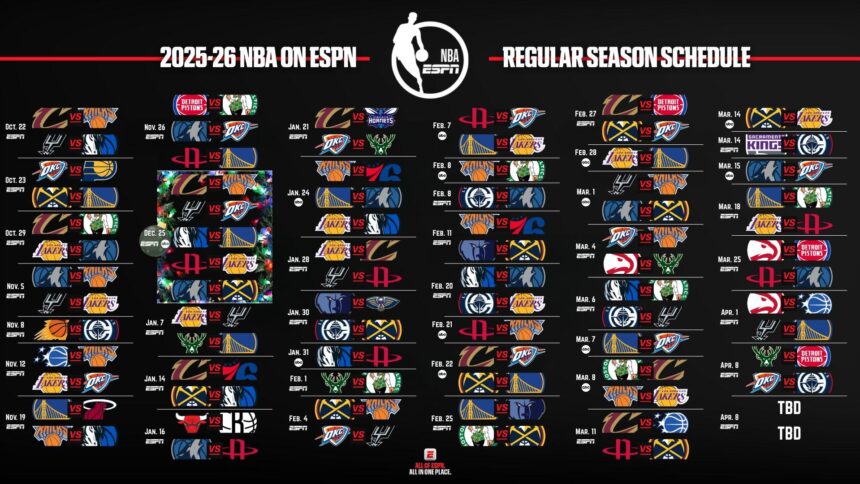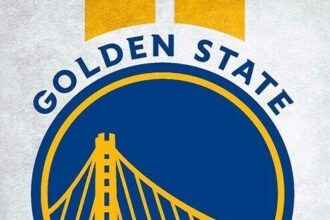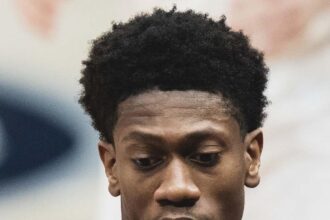As the NBA gears up for the 2025-26 season, a recent shift in officiating focus is poised to reshape the dynamics on the court, particularly around the three-point line. According to CBS Sports, the league’s latest emphasis on enforcing defensive contact rules is expected to result in a significant increase in fouls called on three-point attempts. This development signals a potential surge in free-throw opportunities and a strategic recalibration for teams capitalizing on perimeter shooting. Fans and analysts alike are closely watching how this change will impact game flow and scoring patterns in the upcoming season.
NBA’s New Officiating Focus Targets Defensive Contact on Three-Point Attempts
As the NBA gears up for the 2025-26 season, referees are set to clamp down on defensive players initiating contact on three-point attempts. This shift in officiating philosophy aims to enhance the integrity of perimeter shooting by penalizing defenders who impede shooters’ rhythm and balance. League sources indicate that officials will be more vigilant in calling fouls on slight hand-checking, arm grabs, and body bumps beyond the arc-actions previously often overlooked or deemed incidental.
This stricter enforcement could result in:
- Increased foul calls on defensive players guarding shooters, particularly during clutch moments.
- Higher free-throw attempts from beyond the arc, potentially altering game strategies and player behaviors.
- Greater opportunities for sharpshooters who rely on quick, unimpeded releases.
| Violation Type | Previous Tolerance | 2025-26 Enforcement |
|---|---|---|
| Light Hand-Checking | Often Ignored | Strictly Called |
| Arm Grabs During Shot | Rarely Penalized | Punished More Frequently |
| Body Bumps | Considered Incidental | Increasingly Penalized |
Impact of Stricter Calls on Game Pace and Team Strategies in 2025-26 Season
The NBA’s intensified focus on stricter officiating regarding fouls on three-point attempts is poised to significantly alter the rhythm of games in the 2025-26 season. Teams are likely to see a slowdown in game pace as referees call fouls on more contested perimeter shots, disrupting offensive flows and increasing stoppages. This shift will force coaches to adapt quickly, emphasizing the importance of drawing fouls through tactical spacing and smarter shot selection rather than relying solely on free-flowing three-point attempts. Defenders, meanwhile, will need to adjust their approach to perimeter defense, balancing aggression with caution to avoid costly foul trouble.
Strategically, the emphasis on calling fouls for contact during three-point attempts is expected to lead to several notable changes across the league:
- Increased emphasis on perimeter spacing to create cleaner shooting looks and reduce the risk of defensive fouls.
- More frequent use of pick-and-pop plays, allowing shooters to release shots before defenders can make contact.
- Greater reliance on players adept at drawing fouls, who can capitalize on free-throw opportunities created by this new officiating stance.
| Factor | Expected Impact |
|---|---|
| Game Pace | Slowed due to increased stoppages |
| Defensive Strategy | More cautious perimeter defense |
| Offensive Tactics | More pick-and-pop, spacing emphasis |
| Foul Rates | Noticeable rise in three-point foul calls |
Coaches Urged to Adapt Defensive Schemes to Mitigate Increased Foul Risks on Perimeter Shots
In response to the NBA’s tightening officiating stance on perimeter defense, coaches are being pressed to rethink their defensive frameworks. The new emphasis on calling fouls more strictly during three-point attempts means defenders must prioritize positioning and avoid physical contact that previously might have gone uncalled. Defensive coordinators are now advocating for more judicious hand placement and increased reliance on team rotations to contest shots without risking additional personal fouls.
Several teams have already begun experimenting with innovative schemes designed to reduce foul frequency on the perimeter. These include:
- Switch-heavy defenses that distribute pressure to minimize isolation mismatches
- Zone variations that limit one-on-one perimeter challenges
- Enhanced communication protocols to anticipate shooters’ movements and prevent overreach
| Defensive Strategy | Key Benefit | Risk |
|---|---|---|
| Switch-heavy Defense | Reduces isolation fouls | Potential mismatch exploitation |
| Zone Variations | Limits direct contact | Vulnerability to outside shooting |
| Communication Protocols | Improves anticipation | Requires high team discipline |
Key Takeaways
As the NBA prepares for the 2025-26 season, players, coaches, and fans alike will be closely watching how the league’s renewed focus on officiating fouls on three-point attempts impacts the flow and strategy of the game. With officials expected to call more infractions on shooters beyond the arc, teams may need to adjust their defensive tactics and offensive plays accordingly. Ultimately, this officiating shift could reshape not only scoring dynamics but also the competitive landscape of the league moving forward. CBS Sports will continue to monitor these developments throughout the season, providing in-depth coverage and analysis as the story unfolds.














